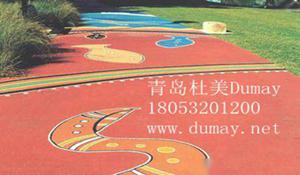Permeable ConcreteAlso known as porous concrete, no-sand concrete, permeable pavement. It is a type of porous lightweight concrete made from aggregate, cement, additives, and water, without fine aggregates.
Permeable Concrete consists of a honeycomb structure with uniformly distributed voids formed by a thin layer of cement paste coating the surface of coarse aggregates, thus possessing the characteristics of air permeability, water permeability, and lightweight.
Permeable Concrete systems offer a series of color formulations, combined with creative designs, for paving construction tailored to different environments and personalized decorative styles.
Permeable Concrete pavement can replenish groundwater, alleviate urban flooding, absorb sound, reduce noise, and improve urban thermal environments, providing significant environmental and social benefits.
Permeable Concrete is characterized by using single-sized coarse aggregates as the framework, with a thin layer of neat cement paste or mortar containing a small amount of fine aggregate wrapping around the surface of the coarse aggregate particles, serving as the bonding layer between the aggregate particles, forming a framework - a porous concrete material with a void structure. Due to the special grading of the aggregates, it forms a honeycomb structure, also referred to as a rice candy structure. Permeable Concrete is a porous accumulation structure formed by the hardened cement paste bonding between coarse aggregate particles, containing a significant amount of voids, most of which have a diameter greater than1mm, thus exhibiting excellent water permeability.













